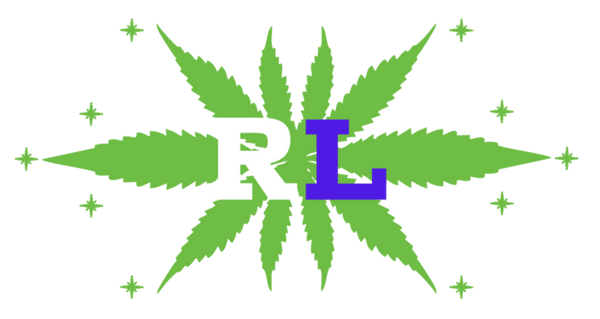
Edibles 101: A Beginner's Guide to Cannabis Edibles
Share
As the legalization of cannabis spreads across various regions, more people are exploring the different ways to consume it. One popular method is through edibles—foods and drinks infused with cannabis. If you’re new to the world of cannabis edibles, this guide will provide you with everything you need to know to get started.
What Are Cannabis Edibles?
Cannabis edibles are food products that contain cannabinoids, primarily THC (tetrahydrocannabinol) and CBD (cannabidiol). These edibles come in various forms, including gummies, chocolates, brownies, beverages, and more. Unlike smoking or vaping, edibles offer a smoke-free option for consuming cannabis, which appeals to many users.
How Do Edibles Work?
When you consume cannabis edibles, the cannabinoids are absorbed through the digestive system. This process is different from smoking or vaping, where cannabinoids enter the bloodstream through the lungs. After ingestion, THC is metabolized by the liver into a compound called 11-hydroxy-THC, which is known to produce more potent effects than THC itself.
Because of this metabolic process, the onset of effects from edibles is slower compared to smoking or vaping. It can take anywhere from 30 minutes to 2 hours for the effects to be felt, depending on factors like metabolism, the presence of food in the stomach, and individual body chemistry. The effects of edibles also tend to last longer, typically between 4 to 8 hours.
Types of Edibles
- Baked Goods: Brownies, cookies, and cakes are classic cannabis edibles. They’re easy to make at home and are widely available in dispensaries.
- Gummies and Candies: These are popular for their taste and precise dosing. Gummies, lollipops, and hard candies offer a discreet way to consume cannabis.
- Chocolates: Cannabis-infused chocolates are another favorite, offering a delicious way to enjoy the effects of THC and CBD.
- Beverages: Cannabis-infused drinks, such as teas, sodas, and even alcoholic beverages, provide a refreshing alternative to solid edibles.
- Savory Snacks: Chips, crackers, and popcorn infused with cannabis cater to those who prefer savory over sweet.
Dosage and Potency
One of the most important aspects of consuming edibles is understanding dosage and potency. The potency of edibles is usually measured in milligrams (mg) of THC or CBD per serving. For beginners, it’s crucial to start with a low dose to gauge your tolerance.
- Microdose (1-5 mg THC): Ideal for beginners and those seeking mild relief from symptoms like anxiety and pain without significant psychoactive effects.
- Low dose (5-10 mg THC): Suitable for those with some experience with cannabis, providing noticeable effects while still being manageable.
- Moderate dose (10-20 mg THC): Best for experienced users who are comfortable with the psychoactive effects of THC.
- High dose (20+ mg THC): Reserved for seasoned users and those with a high tolerance. High doses can produce intense and long-lasting effects.
Tips for Safe Consumption
- Start Low, Go Slow: Begin with a low dose (around 5 mg THC) and wait at least 2 hours before consuming more. This allows you to assess the effects without risking overconsumption.
- Be Patient: The delayed onset of edibles can lead to impatience and the temptation to take more. Resist this urge to avoid an uncomfortable experience.
- Stay Hydrated and Eat: Consuming edibles on an empty stomach can intensify the effects. Drink plenty of water and have a light meal or snack beforehand.
- Know Your Source: Purchase edibles from reputable dispensaries to ensure accurate dosing and safe ingredients. If making your own, follow reliable recipes and be mindful of the dosage.
- Store Safely: Keep edibles out of reach of children and pets. Label homemade edibles clearly to avoid accidental consumption.
Potential Effects and Benefits
The effects of cannabis edibles can vary widely depending on the strain, dosage, and individual tolerance. Common effects include:
- Relaxation and Euphoria: Many users report feelings of relaxation and happiness.
- Pain Relief: Edibles can be effective for managing chronic pain, inflammation, and muscle spasms.
- Improved Sleep: Some find that cannabis edibles help with insomnia and promote better sleep.
- Enhanced Creativity and Focus: In moderate doses, edibles can enhance creativity and focus for some users.
On the flip side, consuming too much THC can lead to negative effects such as anxiety, paranoia, dizziness, and nausea. If you experience these effects, try to stay calm, hydrate, and rest until they pass.
Making Your Own Edibles
If you prefer a hands-on approach, making your own cannabis edibles can be a fun and rewarding experience. Here’s a basic recipe for cannabis-infused butter (cannabutter), which can be used in a variety of edible recipes:
Ingredients:
- 1 cup unsalted butter
- 1 cup ground cannabis flower (decarboxylated)
Instructions:
- Decarboxylate the Cannabis: Preheat your oven to 245°F (120°C). Spread the ground cannabis on a baking sheet and bake for 30-40 minutes, stirring occasionally. This process activates the THC.
- Melt the Butter: In a saucepan, melt the butter over low heat.
- Add Cannabis: Add the decarboxylated cannabis to the melted butter. Simmer on low heat for 2-3 hours, stirring occasionally. Ensure the mixture doesn’t come to a boil.
- Strain: Using a cheesecloth or fine mesh strainer, strain the mixture to remove the plant material. Allow the cannabutter to cool and solidify before using it in your favorite recipes.
Conclusion
Cannabis edibles offer a unique and enjoyable way to experience the benefits of cannabis. Whether you’re seeking relief from medical symptoms or looking for a recreational experience, edibles provide a smoke-free, discreet, and flavorful option. By starting with a low dose, being patient, and following safe consumption practices, you can enjoy the effects of cannabis edibles responsibly and effectively. Remember to stay informed about the laws in your area and always purchase edibles from reputable sources.
